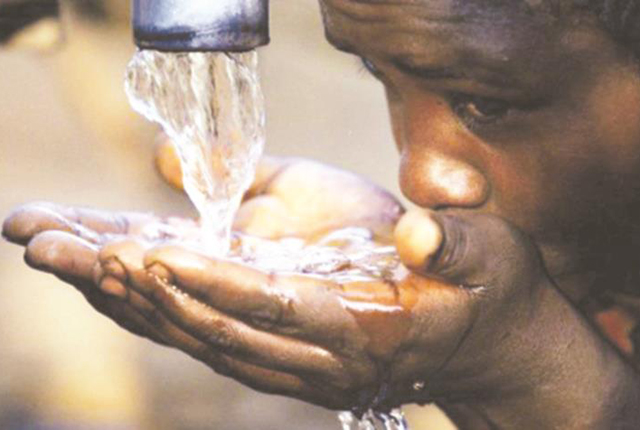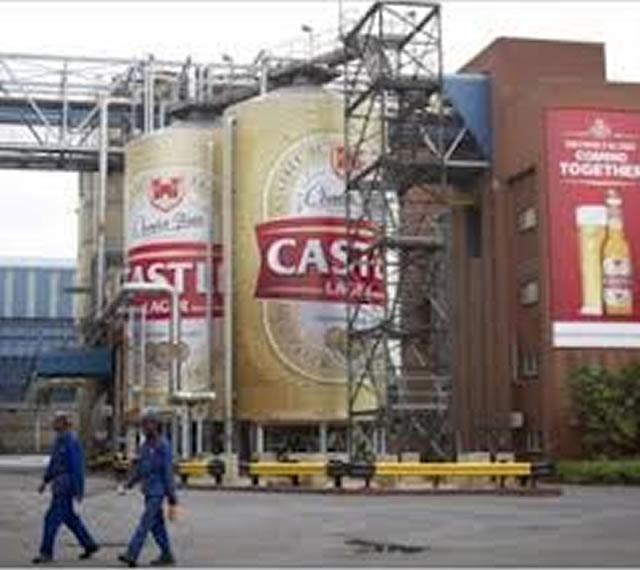Water is top human right need

Chigumbu Warikandwa Review Correspondent
A water-wise Good Samaritan has been offering clean water for free to strangers along Samora Machel Avenue West in the vicinities of Belvedere’s Marimba shopping centre for decades now.
Possibly that person has supplied enough water to cover Norton’s water needs for 24 hours.
What is fascinating about the tap that oozes water forever is that nobody ever comes to inquire about who is collecting water and for what purpose.
The fact is that the provider of that free water dips into his pocket to ensure the continuous supply of that water to his unknown beneficiaries. He is currently renovating a wall around the tap and has not asked for a single cent to buy cement and bricks from residents who fetch water from there. That is how kind that family is.
Water is life
Our bodies are largely made of water. Without water, we cannot survive. Water is one of the special qualities of planet earth. It remains unknown if there is any living species that can adapt to a waterless planet but basing on the biological science of life that should be impossible.
March 22 is the United Nations World Water Day. I wonder if the City of Harare is one of days going to design an award of some sort to people and organisations that have worked hard for the provision of safe water in their communities. It is discouraging that the provision of safe and fresh water remains a subject that stays at the peripheries of the average mind, yet water is a subject of life and death.
Somalia is today battling a crippling drought that has already claimed some casualties through starvation.
At the same time, residents of Sipepa area of Tsholotsho are battling a flood triggered calamity which saw them losing crops, livestock, houses and important community owned infrastructures. The Government of Zimbabwe has put the total flood damage at $180 million. Another flood is predicted in Manicaland and Mashonaland in the next few days. Floods supply too much water, submerging cities and villages under water. The first crisis that comes from this is the destruction of fresh and clean water sources.
The United Nations reports that 1,8 billion of the world’s 7 billion habitants have no access to clean water. These are at a heightened risk of contaminating waterborne diseases, among them typhoid, cholera, diarrhoea, dysentery, bilharzia and polio.
With 26 percent of the world population failing to access clean water, it remains a tall order for the world to meet the Sustainable Development Goal of supplying clean water to 100 percent of the world by 2030, only 13 years away.
Water availability eats away into the economy in many ways. Much productive time is lost as mostly women from the third world run long water-hunting errands.
This impacts negatively on food security and economic development. With scarce water, there is a higher propensity to resorting to unsafe water sources. Levels of sanitation are also highly compromised if access to water becomes costly. Responses to water-borne pandemics also eat a sizeable chunk of any such affected nation’s national purse.
The discourse on water must concentrate on both access and affordability. Kudos to the Zimbabwean Government for the recently completed Tokwe-Mukosi Dam, a mega water body in the country’s South Western limits of Masvingo Province.
Other than supplying safe water to the community, the massive water body with a holding capacity of 1,8 billion cubic meters of water will transform its catchment area into a green belt.
The water has attracted investment running into a billion dollars so far, among them a hydro electricity power plant, a sugar cane plantation, irrigation facilities and an ethanol project.
Tourism and aquaculture players will undoubtedly be attracted by such a generous water pool. The interested investors have prepared themselves to invest fivefold the cost of constructing the mega dam just after the dam has been finished and officially commissioned.
The good rains currently holding have supplied the dam with 1,12 billion (62 percent full) cubic meters with a maximum depth of 77 meters. Surely the Tokwe-Mukosi waters have the promise to become Zimbabwe’s own crude oil.









Comments